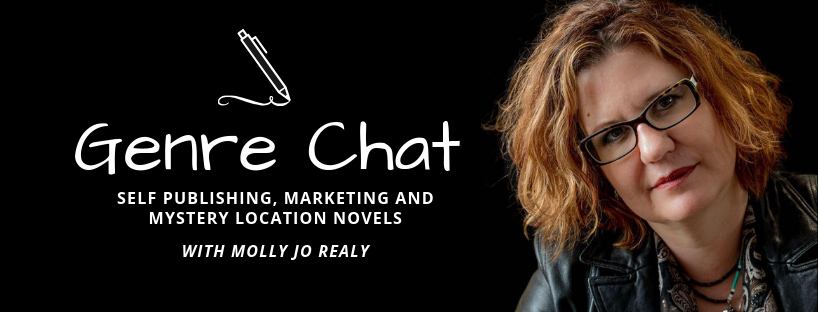Michelle Medlock Adams is an award-winning journalist and best-selling author, earning top honors from the Associated Press, the Society of Professional Journalists and the Hoosier State Press Association.
Author of over 80 books with close to 4 million books sold, Michelle’s works have been the recipients of a Maxwell Medal, 2 Illumination Awards and multiple Selah Awards.
Since graduating with a journalism degree from Indiana University, Michelle has written more than 1,000 articles for newspapers, magazines and websites; acted as a stringer for the Associated Press; written for a worldwide ministry; helped pen a New York Times Bestseller; served as a TV host for TBN’s “Joy in Our Town” show; judged writing contests for Writer’s Digest; and served as a blogger for Guideposts. Today, she is President of Platinum Literary Services—a premier full-service literary firm—and co-owner of PlatLit Books. She also serves as chairman of the board for Serious Writer Inc., and teaches courses for Serious Writer Academy (online education).
When not working on her own assignments, Michelle ghostwrites books for celebrities, politicians, and some of today’s most effective and popular ministers. Michelle is also a much sought after teacher at writers conferences and universities around the nation. In fact, she has taught at more than 100 writers conferences, including keynoting at Liberty University and the Todd Starnes Inaugural Fall Retreat at The Billy Graham Training Center at The Cove. She has also served as an adjunct professor at Taylor University twice, teaching “Writing for Children” and is currently teaching again this Spring Semester. Michelle also loves speaking to women’s groups, youth groups, and congregations, encouraging others to discover their destinies in God.
Michelle is married to her high school sweetheart, Jeff, and they have two grown daughters, Abby and Allyson, two son-in-laws, and one grandson, as well as a miniature dachshund, a rescue Shepherd/Collie mix, and two cats. When not writing or teaching writing, Michelle enjoys bass fishing and cheering on the Indiana University Basketball team, the Chicago Cubbies, and the LA Kings.
Show Notes:
Caleb: Why did you choose to write in this genre?
Michelle: I’m a non-fiction girl by trade. I went to journalism school at Indiana University. I grew up in this non-fiction world because I truly like to interview people and tell their stories, and get the bottom line. It only made since that when I became a children’s writer I would still love to tell the truth in such a way that kids are enjoying it. It was really a natural fit for me to transition from writing non-fiction for adults to writing nonfiction for kids.
Caleb: How did those experiences help you in your research and in honing your craft?
Michelle: I always say the best training you could have as a writer is to work for a daily newspaper. You learn how to write accurately, and you learn how to write tight and very quickly. I think that really did set me up to be able to write for children, because I learned how to write tight and say a lot in a few words. And with kids, when their attention span is that of a fruit fly, you have to learn how to make it interesting.
Caleb: Is it easier to write for children or easier to write for adults?
Michelle: Having written for adults and children, I would say writing for kids is way harder. It’s also more rewarding. Now, it is more work because, especially with nonfiction you have to take facts, and figures and interesting things and make sure you write it in such a way that it doesn’t read like a report.
Michelle has written many types of Children’s Nonfiction, including celebrity biographies, activity books, coloring books and devotions for women and children.
Caleb: What inspired you to write devotions for children?
Michelle: I learned how to write tight early in my career. If you’ve written devotions, those are usually around 225 words, maybe 50 for the prayer and the scripture. You don’t have a lot of words there. I love to write for kids, and I love to write devotions. Let’s do devotions for kids! That was a no-brainer! Anytime you can take something that kids are fascinated with and make it into a scriptural lesson for them, that is a great way to make nonfiction fun.
Caleb: What are the Hallmarks of Children’s Nonfiction? What are things that editors, agents and publishers will be looking for? Also, what are some landmines that you’re going to want to avoid?
Michelle: You can use all of your fiction skills as a writer – the storytelling skills. It can be nonfiction and still be super interesting. Put me right there in the scene, and let me smell what you smell. Let me hear what you heard.
Sometimes in nonfiction, people will take liberty that they shouldn’t. If it says “nonfiction” you have to just stick with the facts. That’s one of those red flags you’ve got to watch out for. If you can’t find it and back it up, don’t put it in there. You’ve got to have your source!
Caleb: Do you have any tips on how to properly conduct research for nonfiction?
Michelle: You want to have 2 to 3 sources for everything, so make sure you keep track of your sources in a separate file so that when you turn it in, you’ll be able to prove where everything came from. That’s one of the other things you’ve got to be careful of with nonfiction – you need to know where you got the information and make sure it’s a credible source. If Wikipedia is your main source, then you are never going to get another assigned work from that publisher.
Michelle suggests finding credible sources such as museum websites, other books that have been written about your topic, scholarly journals, university presses and the Library of Congress website.
Caleb: Most books for kids are significantly shorter than books written for adults. What are some other ways to compensate for a child’s short attention span?
Michelle: Always have a story. Draw them in with something they can relate to. Keep it funny.
Michelle uses the Children’s Writer’s Word Book by Alijandra and Tayopa Mogilner, which can be used to help children’s writers find words that are appropriate for their audience’s reading level.
Michelle: Keeping your sentences shorter will obviously make it for a lower grade level. But even when you’re doing that, I don’t like it to read choppy.
Caleb: Great advice! Just because something needs to be digestible, doesn’t mean it can’t be eloquent.
Michelle: I think some people think, “I can write nonfiction, and it doesn’t have to be as good.” No, it has to be better. It’s like digging for those pearls – those stories that maybe nobody else knows, or at least hasn’t been told in the way you’re telling it.
Sometimes in nonfiction books, they want you to provide activities so that you drive home the message in that chapter. I think that’s a great idea, because sometimes we don’t remember things until we apply them.
There are also some topics that we call “evergreen.” Forever and ever people are going to need them (books about bullying, fear and concept books such as ABC and counting). Write about some of those hard issue needs, like what happens when somebody dies. That’s a nonfiction book that has to be written, because kids need to know what happens.
Caleb: Do you spend a lot of time around kids?
Michelle: I always say my best friends are 3 feet and under. Every summer I go to Camp Challenge, and I hang out with them for an entire week. I’m just listening to the kids and hearing how they phrase things, how they talk and things that are important to them. If you don’t love kids, this is not for you. You have to really love your audience. You should be reading what they’re reading.
Michelle can be found on social media and on her website, MichelleMedlockAdams.com.
Michelle’s newest book, “Dinosaur Devotions: 75 Dino Discoveries, Bible Truths, Fun Facts, and More!” is available for purchase on Amazon.




0 Comments